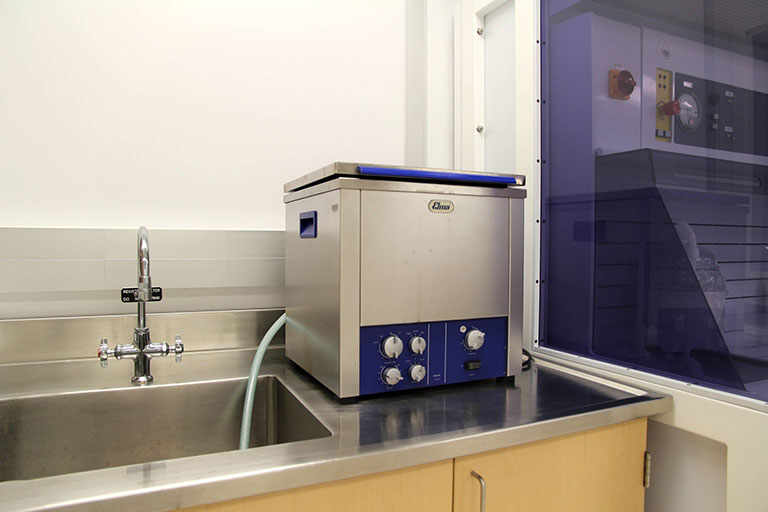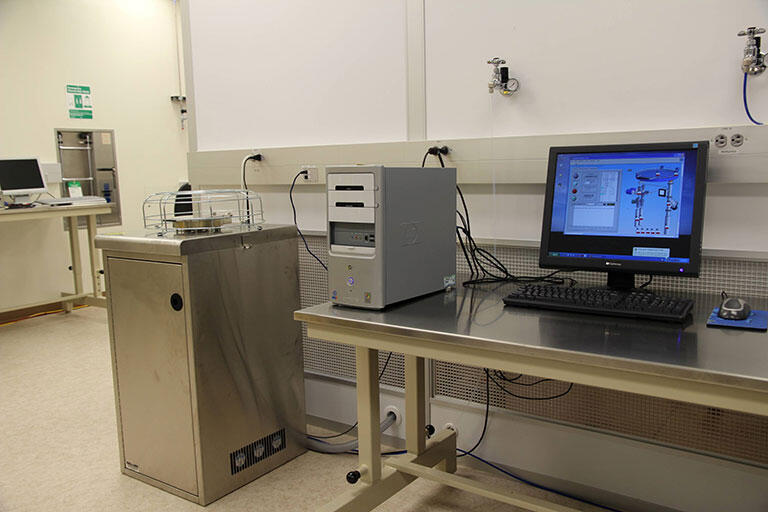

Kulicke & Soffa Thermosonic Gold Ball Wire Bonder: This thermosonic gold ball wire bonder is used to make electrical interconnections between a microchip and the outside world in the semiconductor device fabrication process. Gold wire is used with this particular bonder, and the bonding processes use a combination of heat, pressure, and ultrasonic energy to make a weld at each end of the wire. The gold wire that can be used can have a diameter range between 18 to 76um. It comes with a Bausch & Lomb StereoZoom 4 Microscope (0.7X to 3.0X), a pair of 10X Eyepieces, and a heated workholder.

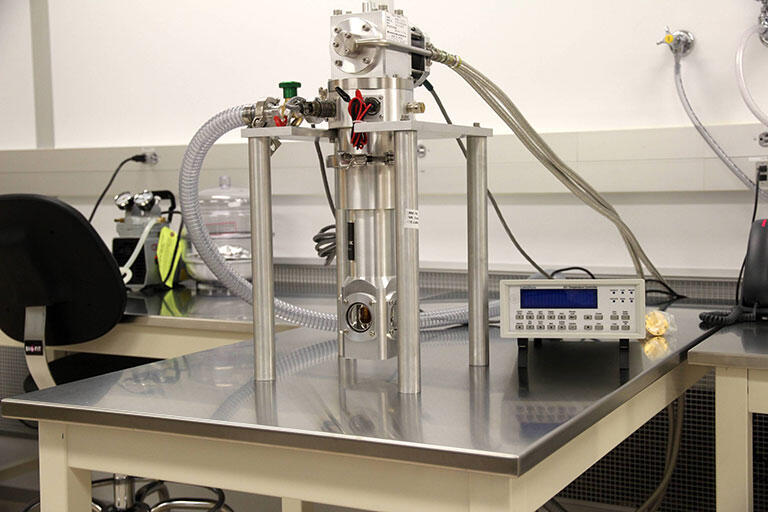
JANIS SHE-4 Series 4.3k Cryostat: One of the versatile and effective cryostats is the Janis SHI-4 series for laboratory sample cooling. This system is equipped with interchangeable optics, and includes provisions for a wide variety of electrical connectors. Tapped holes on the vacuum shroud and a sturdy mounting flange provide for convenient mounting in any orientation. The cryostat is optimized for experiments requiring optical access to the sample and can provide continuous sample temperature variation from 4.2K to 325K. Also the optional configurations permit operation to 500 K or 800 K, with special thermometry. The system includes optical vacuum shroud and radiation shield, four o-ring sealed quartz windows, gold-plated OFHC copper sample holder, 10-pin electrical feedthrough, evacuation valve, safety pressure relief valve, silicon diode thermometer and control heater. This cryostat is a valuable tool for elucidating the science of nanostructures.

An e-beam evaporation system can be used to deposit thin films of various metals, like titanium, gold, nickel, platinum, silver, chromium, and etc... It also can be used to deposit non-metals, like silicon. Materials for evaporation are placed in reusable crucible liners made of graphite, molybdenum, Al2O3…. The selection of the crucible liners is based on the material being evaporated.
The Cleanroom Offers Safety Showers which can be used to chemically decontaminate a person and their clothing, Eye Wash Stations located in within all tree classes which are used to mitigate a chemical splash in the eyes, Halotron Fire Extinguishers located on each bay wall, a First Aid Kit, and a Chemical Spill Kit located in the central utility chase 1159A.
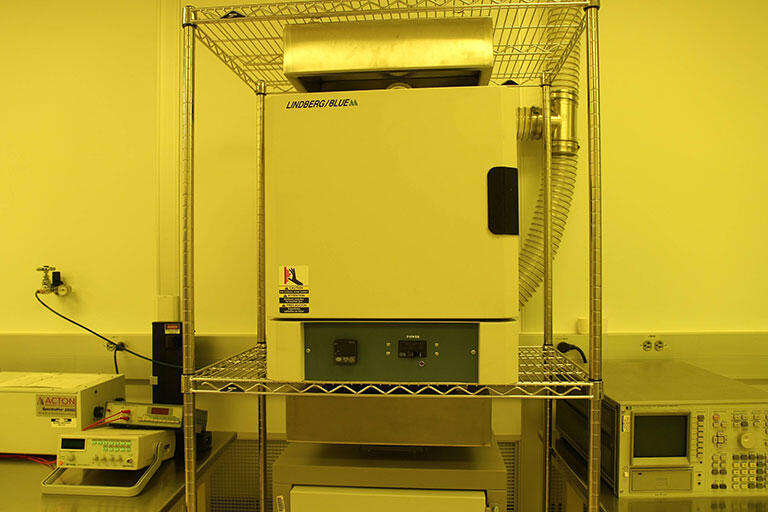

This area houses lockers, specialty gases, and an Ultra High Purity water skid which produces 18.2 megohm water to the wet benches in the cleanroom. It is the only access point to the cleanroom, unless in emergencies, and is a space used to put on approved gowns and store personal items that cannot be brought into the cleanroom.
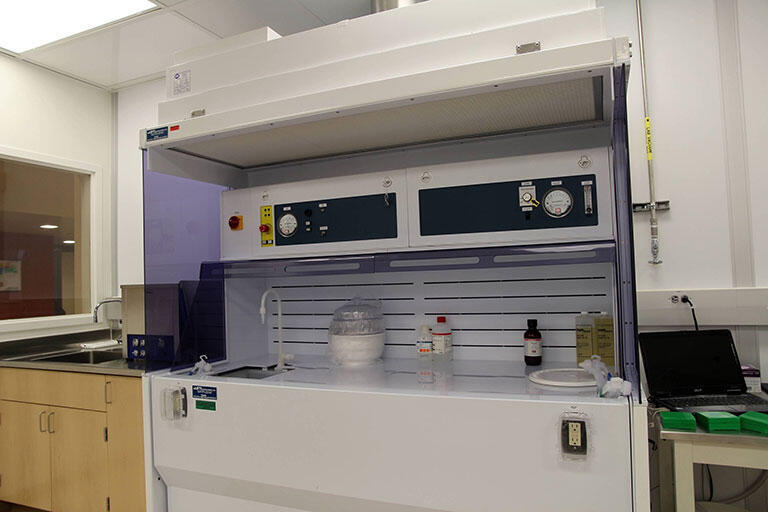

Fume protection under the hoods at the wet benches is only ensured if your material is behind the acrylic flashing, or in the back 2/3rds of the work surface.



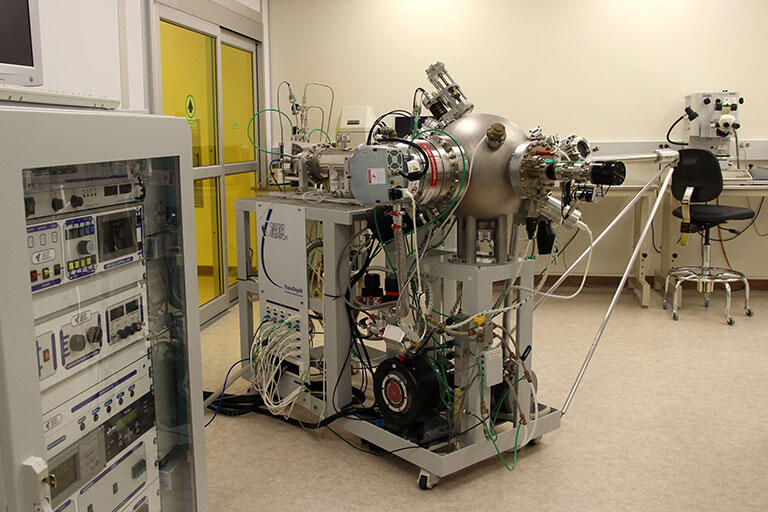

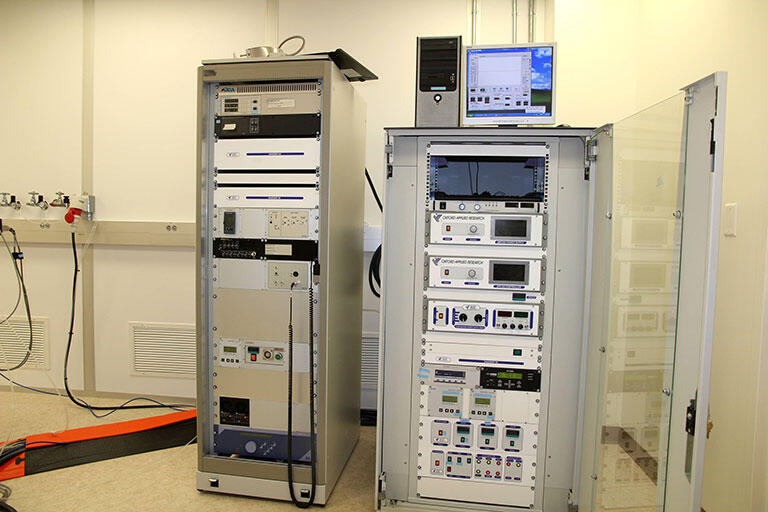
UNLV Multi-Deposition System with PECVD unit (NANOSYS-2): This versatile multi deposition system basically consists of two units, one nanoparticle unit, similar to the Nanosys-1 (built by Oxford Applied Research) and the other part is a CVD unit (built by DCA Instruments). The whole system is maintained under ultra high vacuum with long load-lock and transfer rods to transfer the samples from one chamber to the other. The nanoparticle unit consists of a nanocluster source, a Quadrupole Mass Filter (QMF), a 4-pocket electron-beam evaporator, and a UHV pulsed DC sputter source, descriptions of which are similar to that of Nanosys-1. But the substrate holder has some special features which are not provided in the Nanosys-1. The substrate manipulator has freedom of movement in all three directions. Therefore the charge nanoclusters can be selectively deposited from the incoming cluster beam to avoid the deposition of neutral particles, which will not be affected by the QMF. Thus size-distribution of the nanoparticles will be very uniform. Alongwith the substrate rotation and substrate heating capabilities, substrate biasing is also provided to make the system versatile enough for the fabrication of nanoparticle-based photonic and electronic devices. The CVD unit in Nanosys-2 is a standard unit capable of both thermal CVD and PECVD procedures. This system is basically used for carbon related nanostructures. The Nanoparticle unit and CVD unit are integrated in the same system mainly to keep the samples always under high vacuum, which is very important to fabricate high efficient nano-devices. A magnetically coupled transfer channel and transfer rods are provided in the system to transfer samples from Nanoparticle unit to the CVD chamber under high vacuum. Therefore, nanoparticles deposited in Nanoparticle unit can be transferred to the CVD unit for further treatments to get desired nanostructures under very clean environment, which makes the system silicon IC compatible.
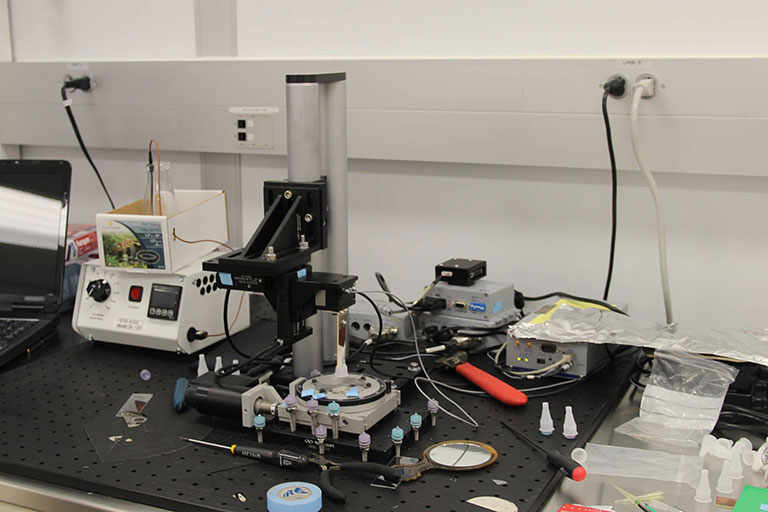

PSIA XE100 AFM/SPM/STM: The XE-100 is a versatile system that is a combined Atomic Force Microscope (AFM), Scanning Probe Microscope (SPM) and Scanning Tunneling Microscope (STM) that provides atomic resolution imaging of nanostructures. This XE-100 AFM/SPM provides the most accurate way to scan the samples with ultimate AFM resolution and reliability via non-contact mode. The system has advanced scan system, on-axis optical viewing with the highest optical resolution (1 micron), flexible sample handling (accommodating samples up to 100 mm in diameter and 20 mm in thickness and weighing up to 500 grams), and true Non-Contact imaging. This AFM can achieve the ultimate resolution of AFM since the sharp end of a tip is preserved in True Non-Contact imaging mode unlike in contact or intermittent (also known as tapping) imaging modes. With motorized focus for on-axis optics, XE-100 provides added versatility to the operation of AFM within the acoustic enclosure. The key feature that enables true Non-Contact Mode is the ultra high force z-scanner that allows a significantly higher resonance frequency than those of conventional piezoelectric tube scanners.
